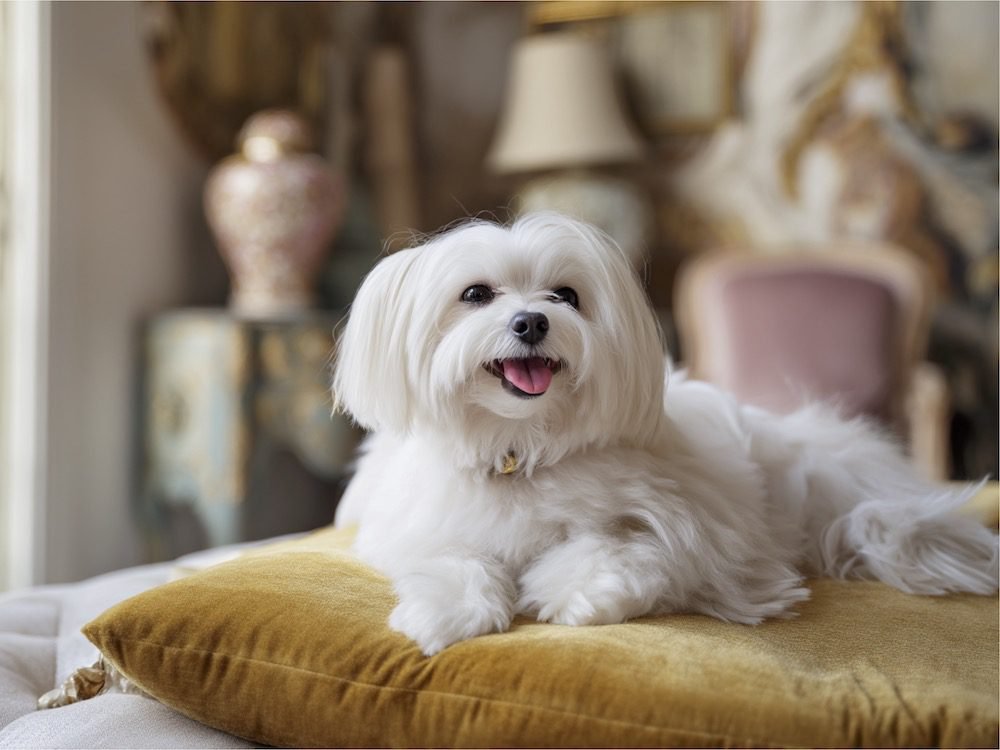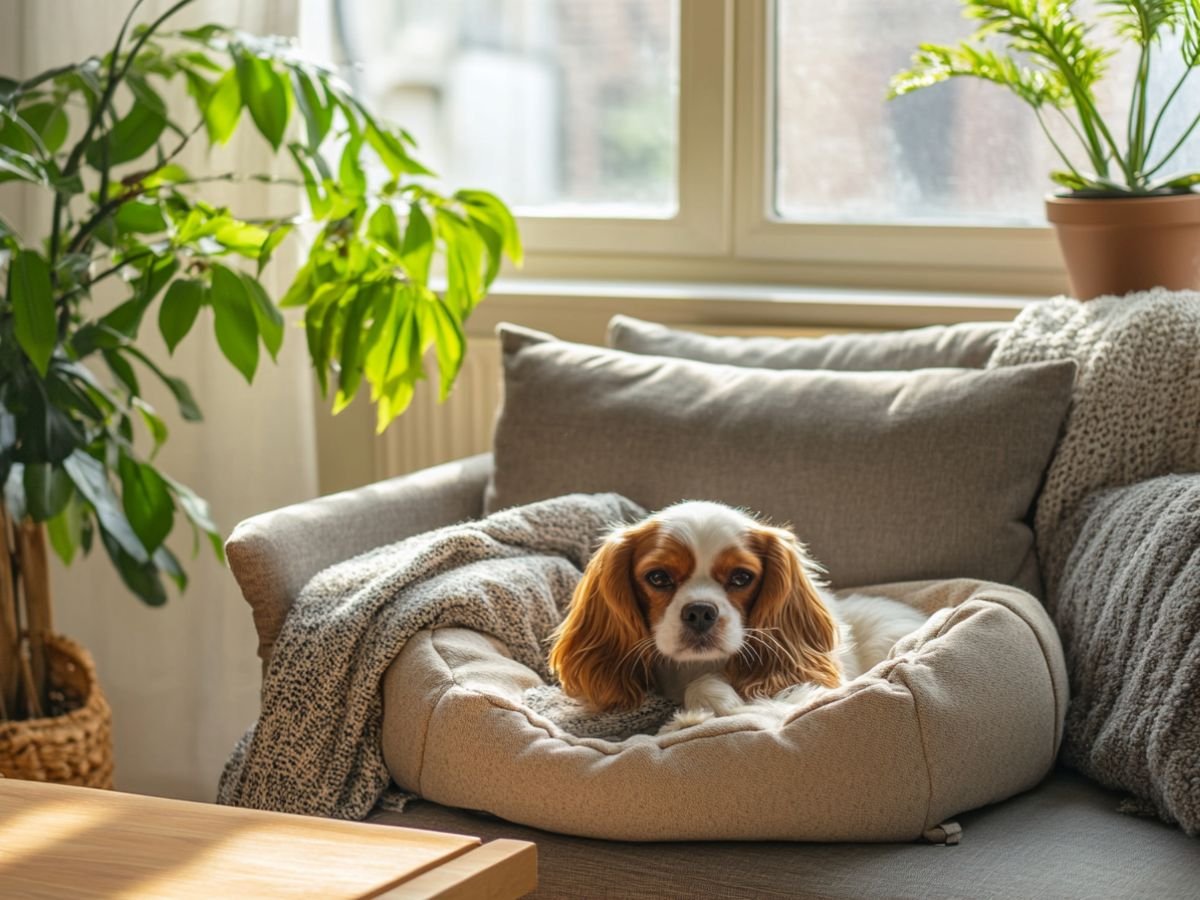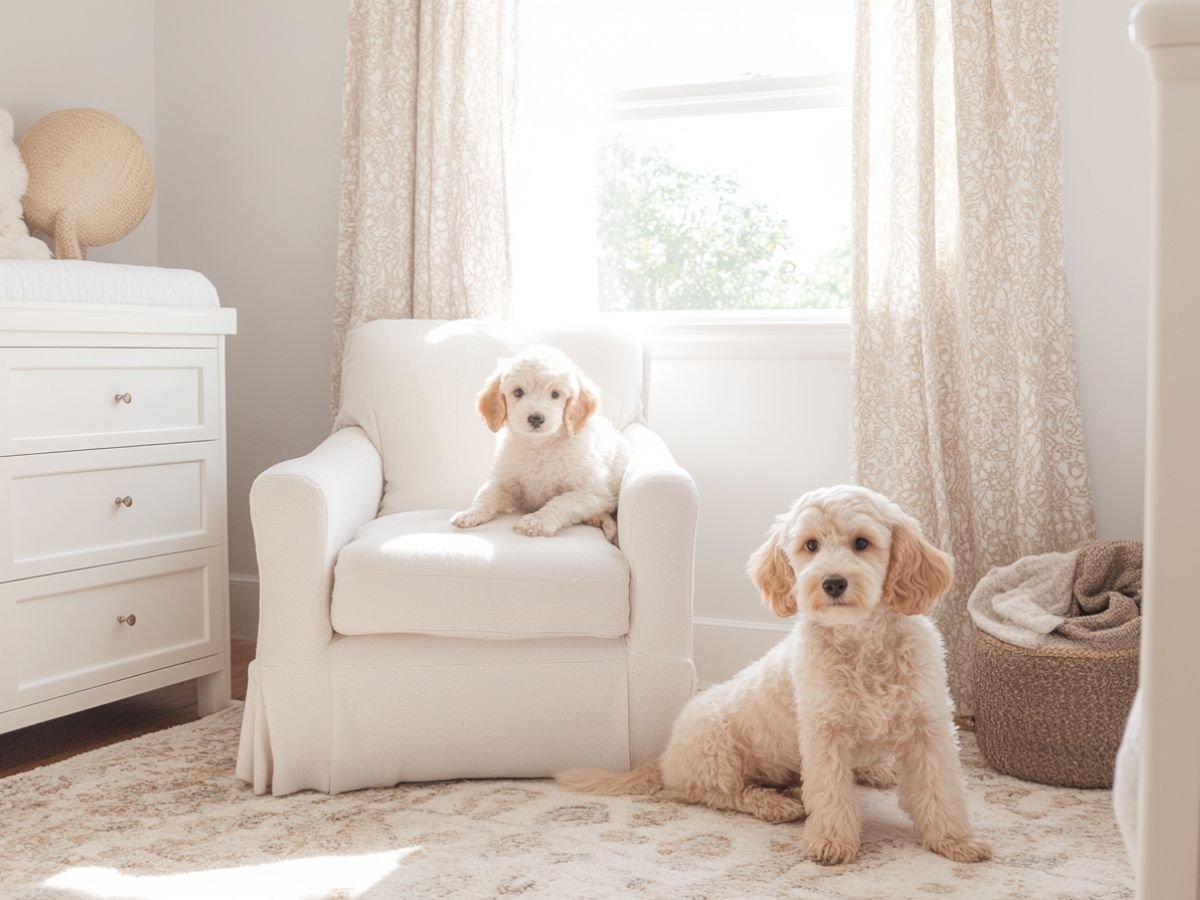French Bulldog Guide 2025: Snorts, Smarts & Real‑World Costs
Thinking about a French Bulldog but worried about the snorts, heat, and vet bills? You’re not wrong to wonder —low-key (quietly), lots of folks are.
This friendly, straight‑talk French Bulldog guide helps you decide—fast—if a Frenchie actually fits your life, your budget, and your climate.
We’ll touch on training basics, best dog food options, easy grooming must‑dos, and the real costs so you can plan with eyes wide open.
If we’re a match, you’ll get practical setup steps to start strong. If not, I’ll say so kindly.
Monty—my opinionated Westie—approves.

French Bulldog at a Glance
| Item | Details |
|---|---|
| Group & origin | AKC group: Non‑Sporting (companion); Origin: England → France companion breed [AKC] |
| Size / weight / height | Compact; up to 28 lb; 11–13 in at shoulder [AKC standard; VCA] |
| Lifespan (avg.) | 10–12 years |
| Coat & shedding | Short, smooth; low–moderate shed; not hypoallergenic |
| Heat sensitivity | High; avoid mid‑day heat/humidity [ACVS on BOAS] |
| Energy (mins/day) | 30–60 minutes of gentle activity; avoid heat [The Kennel Club] |
| Trainability | Moderate (food‑motivated, a touch stubborn) |
| Barking | Low–Medium (more snorts than yaps) |
| Good with kids/dogs/cats | Kids: Yes with supervision; Dogs/Cats: Depends on socialization |
| Apartment‑friendly | Yes (mind elevators and summer heat) |
| First‑time owner friendly | Yes, if you accept airway and skin‑care realities |
| Why people love them | Clownish charm, city‑friendly size, velcro‑level affection |
A Quick Origin Story (and why it matters today)

Frenchies started as toy Bulldogs that lace workers brought from England to France in the 1800s. Paris fell in love.
Artists and café culture sealed their reputation as playful, people‑centric companions. The AKC recognized the breed in 1898, and the Frenchie now ranks #1 in US popularity based on AKC registrations (third year running for 2024 stats).
Why this history matters: Frenchies were bred for company, not farm work. So you’ll see people‑oriented behavior, goofy play, and a strong desire to nap near your feet.
Their short muzzle (brachycephalic) also brings airway and heat‑sensitivity risks you must plan around. [AVMA; ACVS on BOAS]
Temperament & Everyday Life: Sweet clown, stubborn streak

Frenchies act like pocket comedians. They soak up attention, follow you room to room, and invent new ways to sit on your foot. Many stay sensitive; harsh corrections shut them down. Kind, reward‑based training keeps them engaged. I use soft treats, praise, and tiny games. If you raise your voice? You’ll get the Frenchie side‑eye and a dramatic sigh. 😅
Independence: Moderate. You can teach healthy alone‑time, but they really prefer you nearby. Start solo‑time training early (minutes, not hours), and build slowly.
Noise: You’ll hear snorts, grumbles, and the odd alert bark. They aren’t chronic barkers, which apartment dwellers adore. Still, pair “quiet” with a treat the second your dog pauses. If hallway noises trigger a chorus, see my stop barking basics.
Kids & other pets: With early socialization, many Frenchies live happily with children and well‑matched dogs. Supervise around toddlers, food, and prized toys. Prey drive usually sits low–moderate, but squirrels still inspire sprinty decisions.
Training cheat‑sheet
- Top motivators: soft treats, praise, short play. (Use part of dinner as rewards to protect the waistline.)
- Avoid: heat, yanking on collars, long boring drills.
- First 3 cues: name/attention, settle on a mat, and loose‑leash basics.
Socialization (8–20 weeks)
- People & places: introduce hats/helmets, wheelchairs, elevators, vet lobby vibes, and calm cafés.
- Handling: practice gentle ear checks, wrinkle/fold care, and harness on/off with treats.
- Sounds: pair traffic, hairdryers, skateboards, and door buzzers with snacks.
- Species: short, positive sessions with steady adult dogs; gated cat intros to keep everyone safe.
Exercise & Enrichment: Short and smart, not marathons
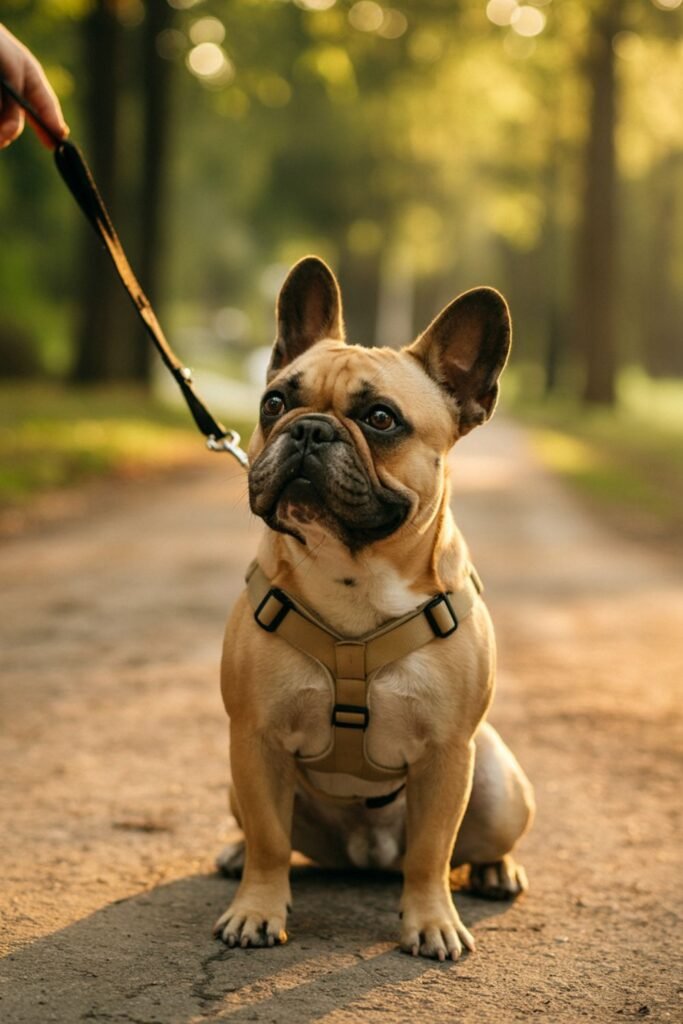
You don’t need a 10K plan. You do need consistency—I do walks everyday, short and sweet. Aim for 30–60 minutes total daily, split into cooler‑hour walks and indoor games. Heat and humidity raise risk fast for flat‑faced breeds, so walk early or late, bring water, and watch tongue color and breathing.
Puppies: Keep things gentle. A simple rule works: about 5 minutes of structured walking per month of age, two to three times daily, plus plenty of sniffy exploration. Focus on training games more than distance.
Adults: Mix sniffaris, hide‑and‑seek recalls, short fetch in shade, and puzzle feeders. If breathing gets louder, your dog lags, or gums look blue‑tinged, stop and cool down immediately. [The Kennel Club—exercise guidance; Cornell on BOAS]
Four enrichment ideas (zero prep):
- Snuffle‑mat dinner instead of a bowl.
- Toss 10 tiny treats down a hallway and cue “find it.”
- Frozen lick‑mat with vet‑approved spread.
- Toy rotation: chew, tug, soft plush—swap daily.
Grooming, Shedding & Coat Care: Low‑ish effort, high payoff

The coat stays short and smooth, but it sheds. Brush weekly with a rubber curry mitt to lift hair and distribute oils. Wipe and dry facial skin folds after meals and walks. Clean ears weekly if waxy.
Check nails every 1–2 weeks. Bathe every 4–6 weeks (or when smelly) with a gentle, vet‑approved shampoo.
The Kennel Club lists once‑a‑week grooming as a baseline—your lint roller says: maybe twice. [The Kennel Club]
Harness over collar: For brachycephalic dogs, a comfy Y‑front harness often eases pressure on the airway.
Starter grooming kit (easy wins):
- Rubber curry mitt + microfiber cloths for folds.
- Dog‑safe ear cleaner + cotton pads.
- Nail grinder/clipper + styptic.
- Lick‑mat to pair care with treats (cooperative care FTW).
See my grooming guide for tools and handling steps.
Health, Diseases & Lifespan: Plan for breathing, skin, and ears
Average US lifespan sits around 10–12 years, but quality of life swings with airway health, body weight, and preventive care. Frenchies face a higher risk for BOAS (brachycephalic obstructive airway syndrome), skin‑fold dermatitis, ear infections, eye ulcers, and patellar luxation. [AKC; VetCompass data]
BOAS 101: Watch for noisy breathing, gagging, exercise intolerance, or blue‑tinged gums. Keep your dog lean, avoid heat, and ask your vet about airway evaluation. Surgery can help selected cases, but weight control and heat management still matter.
Health testing (breeders): In the US, the FBDCA participates in OFA/CHIC. Ask for hips, patellas, and eyesrecorded—plus discussion of nares/palate or respiratory grading. Many breeders also screen heart and thyroid. [FBDCA health testing; OFA CHIC]
Preventive care: Book annual exams, keep year‑round heartworm/flea/tick prevention, and start daily dentalhome care. Small, short‑muzzled breeds often need earlier professional cleanings—budget for it. [ASPCA cost guidance; PetMD dental cost explainer]
Evidence check: A large UK primary‑care study (VetCompass) found ear infections, diarrhea, conjunctivitis, overlong nails, and skin‑fold dermatitis among the most common problems in French Bulldogs. [VetCompass]
Common issues (what owners actually see):
- Ear infections (14%) → shake, odor, head‑tilt. Treat fast to protect comfort. [VetCompass]
- Skin‑fold dermatitis → redness, ooze in facial folds/tail pocket. Wipe and dry daily; see your vet for meds. [VetCompass]
- Eye ulcers → squinting, discharge, rubbing. Emergency visit territory. [VetCompass]
- Patellar luxation → skipping gait. Mild cases use rest/rehab; severe cases may need surgery. [VetCompass]
Mini cost snapshot (US):
| Condition | Typical screening/test | What you watch for | Typical cost range (USD) |
| BOAS | Vet exam; airway assessment; sometimes endoscopy | Loud breathing, heat stress, collapse risk | Highly variable; surgery can reach several thousand [ACVS] |
| Patellar luxation | Orthopedic exam; OFA patella in breeders | Skipping, hind‑leg lameness | $1,500–$5,000 per knee if surgery [MetLife; Vety.com] |
| Skin‑fold dermatitis | Dermatology exam; cytology | Red, moist, smelly folds | $100–$400 per visit + meds |
| Ear infections | Otoscopy; cytology | Head‑shake, odor | $150–$300 per episode |
| Dental cleaning | Oral exam; dental X‑rays under anesthesia | Bad breath, tartar, pain chewing | $300–$1,500+ (extractions raise costs) [PetMD] |
Note: City, severity, and specialist care change prices. Pet insurance can buffer shocks—get quotes before adoption.
Feeding & Nutrition: Keep it lean, keep it simple
Aim for Body Condition Score (BCS) 4–5/9. You should feel ribs under a thin fat layer and see a waist from above. Portion with a scoop, not your heart. 😉 Use the WSAVA checklist when you pick a brand (who formulates the diet? do they run feeding trials? what’s their quality control?). [WSAVA BCS; WSAVA Selecting Pet Foods]
Puppy → adult → senior:
- Puppies need a complete, balanced puppy diet split into 3–4 meals.
- Adults usually do well on 2 meals; use part of dinner as training treats.
- Seniors may need fewer calories and joint support—ask your vet.
Common Frenchie sensitivities: Some dogs show food‑responsive skin/ear issues. Don’t jump straight to grain‑free. Work with your vet on proper diet trials. For vetted picks across budgets, see my best dog food guide.
Training Essentials: Calm structure beats power struggles
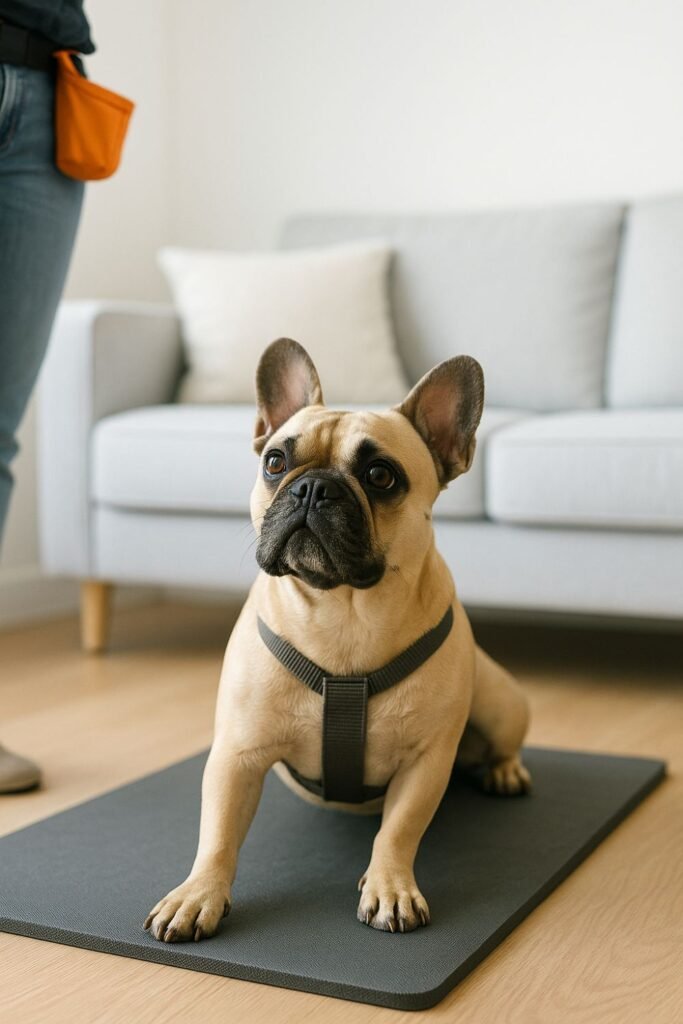
House‑training: Take the pup out after waking, eating, and playing. Reward at the spot. Accidents? Clean up and move on—no drama.
Crate comfort: Make the crate a safe nap zone. Feed meals there and pair with a safe chew. Never use the crate for punishment.
Alone‑time: Start on day one. Two minutes with a stuffed chew, then five. Build slowly with white noise and routine.
Three quick wins
- Name game: say name → eye contact → treat. Fast reps build focus.
- Settle on a mat: reward any calm downs; add duration.
- Trade game: swap toy for treat to prevent guarding.
Three common pitfalls
- Over‑exercising in heat or running long distances.
- Yanking on collars (use a harness).
- Long, dull drills—keep sessions 3–5 minutes and fun.
Fit Check: Will a Frenchie work in your life?
Quick vibe check: do you want a patio pal more than a hiking buddy?
Home: Apartments and townhomes work. Elevators help during potty training. Stairs are fine, but go slow after surgery or in heat.
Time: Frenchies love company. Plan midday breaks for young dogs. If you work long shifts, book a dog walker.
Climate: US summers get spicy. AC, shade, and water aren’t optional. Avoid mid‑day outings.
Travel: Car trips over long hikes. Absolutely no cargo flights for brachycephalic dogs.
Self‑check (Yes/No):
- I can budget for airway/skin/eye care.
- I can keep my home cool in summer.
- I’m home enough for a companion breed.
- I’m fine with snoring and snorts.
- I’ll use a harness and manage weight.
- I like short, smart walks, not endurance runs.
- I’ll train kindly and consistently.
- I’ll clean wrinkles and ears without gagging. 🙃
Pros & Cons (it depends on your lifestyle)
Pros
- Compact, apartment‑friendly size.
- Low bark; high cuddle factor.
- Playful, social little clown.
- Short coat = simple grooming.
Cons
- Heat‑sensitive; strict summer management.
- Health risks can raise vet costs.
- Stubborn streak; needs tasty motivation.
- Not hypoallergenic; does shed.
Real‑World Costs (US)
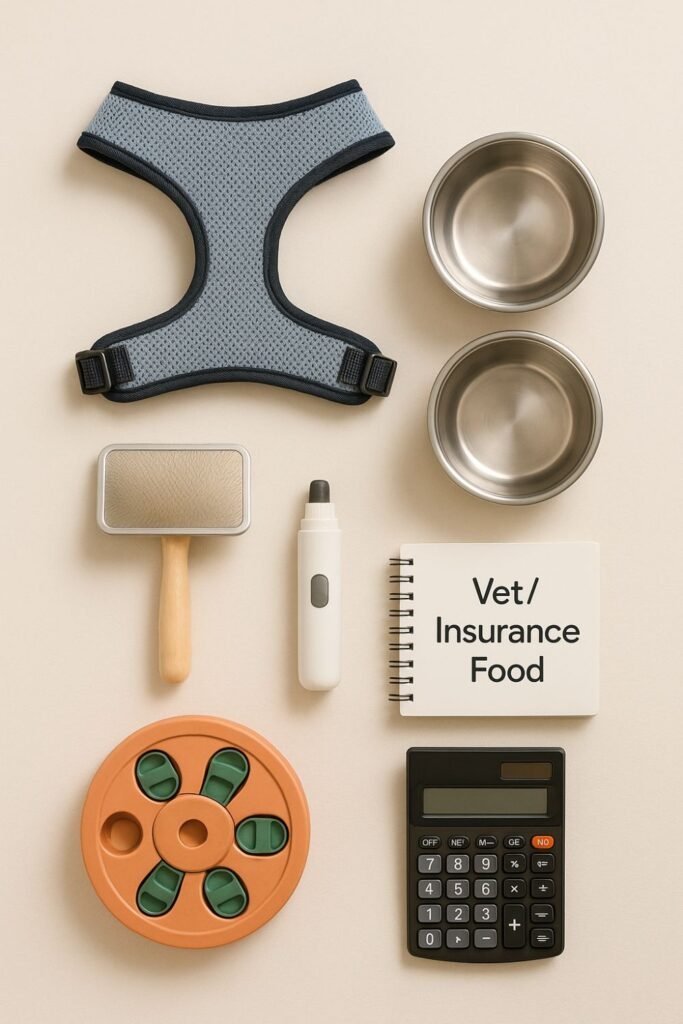
Frenchies aren’t the cheapest companions, no cap —here’s a realistic snapshot:
| Category | Item | Typical Range (USD) |
| One‑off | Adoption (Frenchie‑specific rescues) | $700–$1,500 age‑dependent [FBRN] |
| One‑off | Purchase from ethical breeder | $2,000–$6,000+ (varies widely) |
| One‑off | Spay/Neuter | $250–$700 |
| One‑off | Microchip | $25–$60 |
| One‑off | Starter kit (crate, bed, bowls, leash, ID) | $150–$400 |
| Monthly | Food | $40–$90 (size/brand dependent) |
| Monthly | Insurance (US) | $55–$95+ typical for this breed |
| Monthly | Parasite prevention | $20–$40 |
| Monthly/Quarterly | Grooming (DIY low; pro bath) | $0–$60 |
| Occasional | Training classes | $120–$250 per 4–6 weeks |
| Occasional | Dental cleaning | $300–$1,500+ [PetMD] |
| Occasional | Boarding/pet sitting | $35–$90 per day |
First-year estimate: ~$1.8k–$4k+; typical monthly baseline: ~$120–$250 (food, insurance, preventives).
For medical cost ranges (BOAS, patella, dental, etc.), see the Mini cost snapshot in the Health, Diseases & Lifespansection.
Why ranges swing: geography, your dog’s health, and whether you DIY grooming. The ASPCA pegs typical annual dog costs around $1,391 before emergencies or surgery. [ASPCA]
Adoption & Ethical Breeders: Do your homework (and then some)
Rescue routes (US): Start with French Bulldog Rescue Network (FBRN) and Chicago French Bulldog Rescue (CFBR). Set alerts on Petfinder and check all‑breed rescues for owner surrenders. Ask about airway history, prior surgeries, skin and ear health, and how the dog copes with heat.
Breeder checklist (non‑negotiables):
- OFA/CHIC health results shared: hips, patellas, eyes; discuss nares/palate and any respiratory function grading.
- Early socialization (surfaces, sounds, handling) and a return clause.
- Written contract and health guarantees.
- Home‑raised puppies, limited litters, and open communication.
Red flags: cash‑only, no records, “rare colors” upcharges, multiple litters onsite, no questions for you, or zero proof of health testing. Popularity attracts bad actors—slow down and verify.
Your Next Paw Step
You’ve got the facts; now get perspective.
Peek at the most popular small dog breeds to compare energy, dog behavior, and “can-I-handle-this?” routines.
Choose the pup that fits your actual Tuesday, not your fantasy Saturday. 🙃
Read next → https://westiewisdom.com/small-dog-breeds/
Follow for fresh pins + quick wins: Pinterest
FAQs About French Bulldogs (Frenchies)
1. Do French Bulldogs bark a lot?
Not usually. Expect snorts and grumbles over constant yapping. Train a “quiet” cue early and pay that silence with a treat.
2. How much exercise do they need?
Plan 30–60 minutes daily in cooler hours with lots of sniffing and short training games. Skip heat and hard runs. [The Kennel Club]
3. Are Frenchies good with kids?
Often, yes—with supervision and early socialization. Teach kids to respect space and say “trade” for toys.
4. What health problems are common?
Breathing trouble (BOAS), ear/skin infections, eye ulcers, and patella issues show up a lot. Keep your dog leanand see your vet promptly. [VetCompass data; ACVS BOAS]
5. What’s the typical lifespan?
Many guides list 10–12 years. Airway care, weight control, and preventive vet work make a big difference. [AKC]




